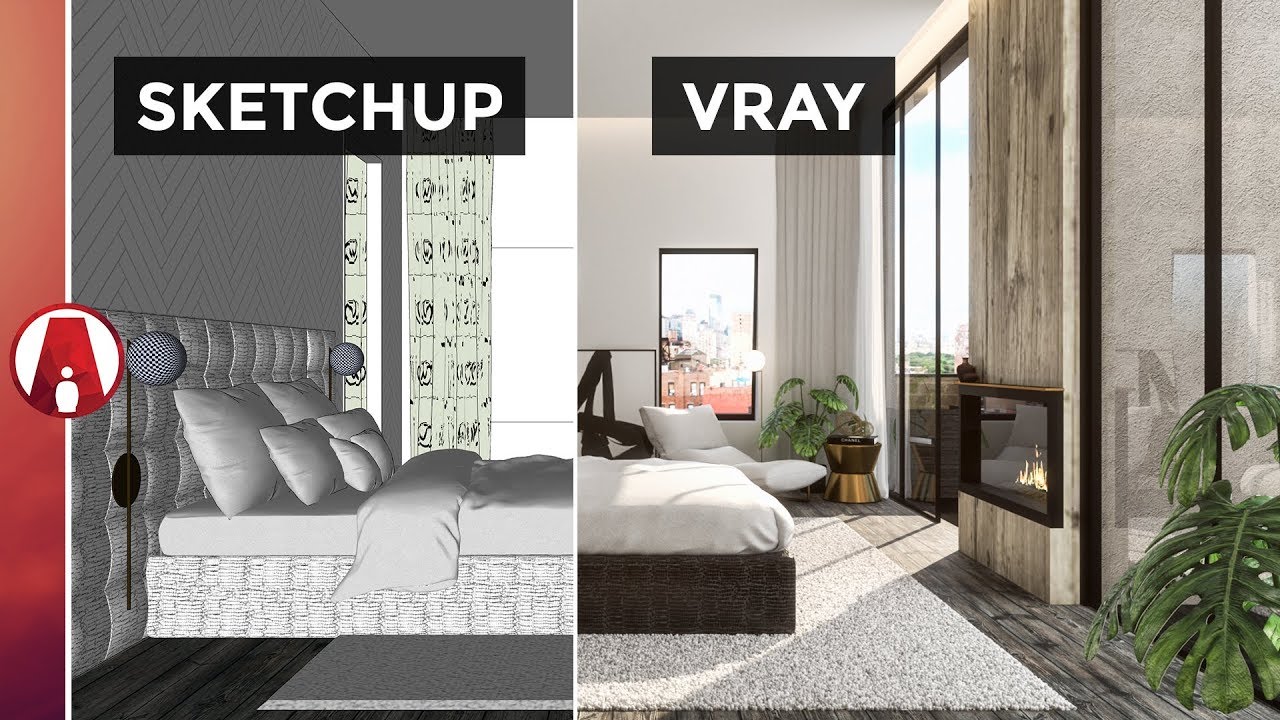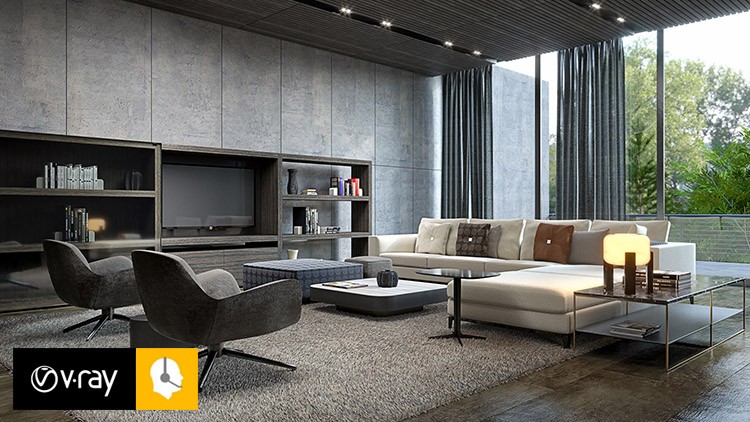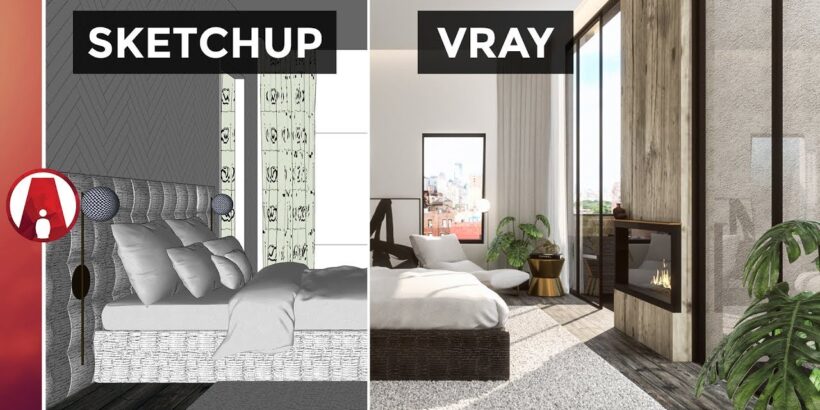V-Ray Crack + Product Key

V-Ray Crack Chaos offers a suite of state-of-the-art tools specifically designed for architects, designers, and AEC professionals. Render everything from early mass models and photorealistic images to animation and real-time immersive experiences. Chaos brings visual effects to life. From heroes and creatures to vehicles and environments, V-Ray’s award-winning photorealistic ray tracing has helped artists create hit-and-miss effects in film, television, and games. Chaos products are the driving force behind the best representation of automotive and consumer products. From innovative design concepts to creating seamless and optimized 3D e-commerce experiences, including 360° interactivity and augmented reality. Chaos® V-Ray® is a 3D rendering plugin available for all major 3D design and CAD programs. It works perfectly with 3ds Max, Cinema 4D, Houdini, Maya, Nuke, Revit, Rhino, SketchUp, and Unreal. With V-Ray, artists and designers can explore and share their projects with real-time ray tracing and render high-quality 3D visualizations. It is widely used in architectural visualization, advertising, and visual effects for film and television V-Ray Crack.
V-Ray has a large user community and is known for its incredible versatility. V-Ray has received a Sci-Tech Academy Award® and an Engineering Emmy Award® for providing fully ray-traced, photorealistic CGI to the film and television industries. V-Ray differs from other rendering solutions in that it includes both CPU and GPU+CPU hybrid rendering options. The V-Ray rendering engine uses adaptive ray tracing technology and proprietary scene intelligence to create photorealistic images and animations. It accurately calculates the light distribution as well as the physical properties of each material. Recognized by 92 of the top 100 digital architecture companies, V-Ray is integrated into the pipelines of leading film and visual effects companies. V-Ray is built to handle the toughest scenes and biggest projects. Architectural visualization is an important part of the architectural design process as it enables architects to explore, experiment with, and communicate their design ideas to clients and stakeholders. Architectural visualization software like V-Ray allows architects to create stunning photorealistic 3D renderings and animations to create marketing materials and virtual tours of their projects.
You may also like this Device Doctor Crack
V-Ray Crack Features
- 95 of the top 100 architecture firms use V-Ray to visualize the world’s tallest buildings, the world’s most sustainable homes V-Ray Activation Key,
- and the world’s smartest cities. V-Ray is designed for architecture. It connects seamlessly with leading 3D modeling and design.
- applications used in architectural visualization, including 3ds Max, Revit, Rhino, SketchUp, and Unreal. With V-Ray’s comprehensive.
- a suite of tools, you can render anything you can imagine, from early mass models to photorealistic imagery, animation, and even.
- VR presentations of your final designs. When it comes to visualizing architecture, be it a custom home, a sleek new office,
- or a remarkable engineering achievement, photorealistic imagery helps viewers and clients understand how your designs will translate into the real world.
- Long before a structure is built, the viewer can already see at the design stage how light interacts with its materials,
- how its size affects the environment, and even choose the furniture with which to decorate rooms. Whether you’re working on a quick.
- concept or a final image for a presentation, showing your designs helps viewers and clients better understand your ideas.
- V-Ray makes the process at every stage of your pipeline quick and easy with a ray tracer that’s built for quality, optimized for speed,
- and scalable. With scenes reaching billions of polygons, it’s more important than ever to have a fast and robust rendering engine V-Ray Crack.
- that makes working with complex projects easier. Built to handle your largest models and most complex scenes,
- V-Ray leverages its trusted arsenal of features including adaptive lights, proxy objects, and distributed rendering.
- You want to be able to render fast but make decisions even faster. Loaded with many carefully crafted presets,
- V-Ray is designed to take advantage of the latest CPU and GPU hardware with blazing-fast interactive production rendering to speed.
- up reviews and help you make smarter, faster design decisions. Intuitive controls and compatibility are essential when time is of the essence.
- V-Ray is easy to learn—and gets easier to use with each new version—and it’s compatible with the most popular archive-viewing.
- plugins, including Forest Pack, Railclone, Substance Painter, and more. When your tools work together, everything happens faster.
- The environment such as trees, vehicles, and people can be used at any stage of the design process to add realism and scale and help.
- in decision-making. Chaos has made this easy and accessible with Chaos Cosmos, a library of over 650 free resources.
V-Ray Crack System Requirements
- PCG processes (Procedural Content Generation), automation, AI, and more. AZ: Our workflow can be roughly divided into modeling and art V-Ray Product Key.
- In the modeling part, we receive design files in SketchUp or Rhino from the customer. After prior organization in other software,
- We import the data into our custom code to generate automated terrains, which is done in Houdini or CityEngine.
- With simple code, models are imported back into 3ds Max or other Digital Content Creation (DCC) software, and materials are assigned automatically,
- completing the entire modeling process in an automated manner. As for the graphics, we use the V-Ray processor to create.
- designs and communicate with the client for about two to three rounds before moving on to the final rendering.
- However, now that the Vantage version is stable and can handle most of the scenes, we prefer to use Vantage to create initial drafts, which gives us faster.
- response time in projects. Of course, first-round builds can still involve AI tools like Stable Diffusion, and we hope Chaos can integrate such features natively as well.
- AZ: There are three main reasons for the decision to use V-Ray and Vantage for architectural visualization. First,
- In the architectural visualization industry, there is a large number of assets compatible with the V-Ray rendering engine V-Ray Crack,
- which makes V-Ray very competitive in the architectural space. Secondly, Vantage offers excellent support for standard V-Ray materials,
- which require a minimum of additional conversion processes and allow the direct creation of certain special effects shots.
- Third, Vantage offers excellent rendering speed and scene editing capabilities, allowing for quick animation of scenes at different.
- scales or the creation of previews. AZ: Updates from V-Ray 6, like the introduction of procedural clouds and sticker capabilities,
- have greatly increased our efficiency. Second, we greatly appreciate the use of Cosmos resources in the early stages to quickly.
- create a conceptual scene to improve the accuracy of communicating with clients. Vantage also introduces a number of new.
- capabilities that allow fast animation of static scenes created in the same V-Ray environment and achieve rendering effects.
- similar to CPU rendering. This simplifies the administration and production processes for many projects. AZ: Without a doubt,
- Live Link is the most used feature. Thanks to the real-time reflection of scene changes, we can use it for various visual needs,
- such as water waves, weather effects like rain and snow, and animations of architectural components flying around the scene.
- Using Tyflow and the editing functionality of 3ds Max. All of this can be rendered via the live link feature. The new version.
- of Vantage supports volumetric fog and we can’t wait to use this feature. AZ: While the emphasis is on realism,
- the key is observing real life and using technology to skillfully recreate it. However, we also work with clients who are unique.

What’s new V-Ray Crack
- To address these challenges, we are still conducting extensive surveys of the site’s surrounding ecology. We prefer not to rely on it V-Ray Serial Key.
- Photoshop to recreate outdoor scenes, as finding an exact replica of the eco-environment can be difficult for some projects. AZ:
- When we find that a major release has new features (e.g. live texture support was introduced with Vantage 1.8, so high polygon.
- moves are not required to create water waves), and we organize an internal meeting to bring artists together to draw attention to the new functions.
- and provide case scenarios. Sometimes we also come across nifty techniques that 3D artists share on video sites and immediately catch our eye.
- We believe that learning software requires long-term interest and continuous knowledge building.
- AZ: V-Ray 6’s Sun and Cloud procedural capabilities allow us to easily create realistic and believable lighting environments.
- Adding clouds adds vibrancy to scenes and reduces reliance on HDR images, especially for animation projects that require.
- effects like time-lapse. AZ: More animation projects will follow and Raying Studio will continue to explore the possibilities of Vantage.
- In addition, as a multidisciplinary studio, we will continue our research on automated modeling and PCG processes and tackle them.
- new experiments and technology integrations. MTMA is an Italian studio specializing in archiving, using cutting-edge.
- techniques to create realistic images and animations of architectural spaces. Founded by Marcello Pagnan, Marco Bozzetto,
- and Tommaso Gasparini, MTMA has extensive experience in the architecture sector, having worked with major architects.
- firms in Italy and abroad. To successfully bring their architectural projects to life, they rely on Chaos Vantage, a software tool that V-Ray Crack.
- enables real-time exploration and presentation of 3D scenes. Read on to learn more about MTMA’s work, their visualization techniques,
- and how incorporating Chaos Vantage into their workflow has helped them create immersive experiences. I’ve been using 3D.
- technology to communicate my ideas since I studied architecture in Venice. Back then I was rendering with Autocad and my.
- friends were amazed at the results I was able to get. I then switched to 3ds Max and its in-house render engine and eventually.
- started using V-Ray for its excellent global illumination handling. During my studies, I met my future partners. We had all gained professionalism.
- experience in different architectural offices and then decided to open our own office and combine design and presentation skills.
- The mutual trust that has grown over a long period of time, recognizing the alternative approaches and complementary skills.
- of the other has led us to success. It really depends on the end goal or purpose of the project. For our internal architectural projects,
- we make extensive use of the “Clay Enduit” technique to validate our ideas and then communicate them to our clients.
How to install it?
- also known as Project Lavina. We tested it with an Nvidia RTX 2070S at the time. When Chaos Vantage was released in its final retail version,
- we installed RTX 3090s on our workstations. Finally, there were no longer any limits! We were able to work on huge scenes.
- millions of instantiated objects, so foliage, trees, and grass could be changed on the fly with real-time feedback.
- Even rendering the final images (6000×6000) takes 2-3 minutes! Before Vantage, we rendered them in batches,
- which typically took a whole night to calculate, and we hope there aren’t any bugs or power outages. It’s worth remembering that while.
- CG is getting better and better, and sometimes photo-like, there are many variables to consider. From financial and time constraints to the.
- media we use to view the image (paper, monitor, smartphone, etc.), lighting conditions, etc. In our day-to-day work, we have to explain.
- our vision of the project to our clients, and CG images are just that a piece of a very complex and fascinating puzzle V-Ray Crack.
- The final image can deliberately avoid photorealism: it must be able to express ideas and concepts, suggestions,
- and maybe even emotions. Realism is often what the customer expects, but it can become a limitation when overdone and when.
- It’s a great time-saving tool. We usually create these images in VR so that our customers can understand the actual spatial proportions.
- We often stop at this point because we don’t focus on the furniture, but on the architectural volumes and how natural light interacts with them.
- If the work is subcontracted to other architects during this time, we move on to more detailed and complex scenes based on their moodboards.
- In architectural competitions, we try to combine realism and a stylized atmosphere because we have to convey our ideas to a mixed.
- audience of engineers and designers. More creativity in less time. We used to invest enormous resources in upgrading or changing.
- hardware and still had to rely on render farms for animation or large images. We’re among the early adopters of Vantage since it was in beta testing,
Conclusion
This Chinese company combines the latest technology with a savvy artistic touch to produce images of China’s booming construction industry. As a result, she has won the holy grail of clients: a regular client with whom she can work exclusively We interviewed Archie Zhou, the founder of Raying Studio, to share his take on the company’s V-Ray and Vantage workflow and how they use Chaos software to create photorealistic architectural visualizations. Archie Zhou: Time flies! In the two years since we last spoke, we’ve gone through several changes at Raying. We have moved to new offices and now focus on architectural animations with a special style. In addition, we have been working continuously on creating visualizations for Anaya, a specialist real estate company, for over five years. In terms of technology, we also explored several new areas that we hadn’t ventured into before, such as B tastes and a liking for in-scene storytelling. In these cases, it is important to pay attention to composition and color composition and to learn from painters and photographers. We often keep in touch with a good friend of ours, architectural photographer Liu Songkai to learn more about all the details he captures in his work that represent the real world. AZ: Our clients often design and build homes in beautiful natural settings. For us, the most important thing is to convey the designs V-Ray Vst.
and experiences authentically to people who have never been to these places. Therefore, we often need to create large-scale natural environments and strive for realism. Everything in Cosmos has been curated by Chaos and optimized for V-Ray and in real-time with V-Ray Vision and Chaos Vantage, allow users to add content with the added peace of mind that it will work flawlessly. One of the most exciting recent developments in architectural visualization in real-time. Chaos offers two products that allow users to explore their creations interactively and in high quality: V-Ray Vision and Chaos Vantage. Raying Studio has always been at the forefront of architectural visualization. To design the lighting, we looked for a simple but modular and complete system that could be adapted differently to the different spaces of the medical center. This was done to ensure the right level of lighting comfort in each environment while trying to give the project a unified character through the lighting system. Health and “openness” go hand in hand and an almost monochromatic project, almost entirely white, offers different surfaces to illuminate and highlight with a targeted indirect light, abundant but never annoying. The project was commissioned by a very experienced pharmacist who cares about the well-being of doctors and patients. He could imagine a well-articulated and comprehensive service that requires highly professional and well-appointed environments but is also welcoming and relaxing.
